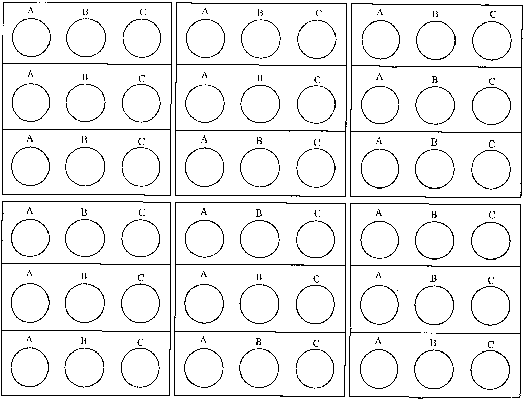Grades 5-8 Performance Task
Contributed by: New York State Education Department (NYSED)
Description:
Students study descriptions of indicators and the way they are
used to identify acids and bases. Based on this information, they
then determine if unknown solutions are acids or bases.
The task assess students' abilities to make simple observations,
apply their observations to test an unknown, and make generalized
inferences from their observations.
This task is designed to take students approximately 10-15 minutes
to complete.
Overall Task Content Area:
- Physical Science
Specific Knowledge Areas:
- Properties of matter
Performance Expectations:
- conducting investigations
- using equipment
- gathering, organizing, and representing data
- formulating conclusions from investigational data
National Science Education Standards:
8 B PS 1: Properties and changes of properties in matter:
Grades 5-8
1.2 Substances react chemically in characteristic ways
with other substances to form new substances (compounds) with different
characteristic properties. In chemical reactions, the total mass
is conserved. Substances often are placed in categories or groups
if they react in similar ways; metals is an example of such a group.
8 A SI 1: Abilities necessary to do scientific inquiry:
Grades 5-8
1.4 Develop descriptions, explanations, predictions, and
models using evidence. Students should base their explanation on
what they observed, and as they develop cognitive skills, they should
be able to differentiate explanation from description — providing
causes for effects and establishing relationships based on evidence
and logical argument. This standards requires a subject knowledge
base so the students can effectively conduct investigations, because
developing explanations establishes connections between the content
of science and the contexts within which students develop new knowledge.
(Use the "hot" link on the PALS
home page to check the full text of related National Science
Education Standards, if desired.)
General Instructions to the Teacher:
This task is designed to take most students 10-15 minutes to complete.
Students will be working individually for the experiment/activity
part of this exercise.
The materials should be set out at each lab station, if possible.
A central supply area, if needed, should be easily accessible. All
supplies should be clearly labeled.
Materials for "Acid and Basing Testing 1 - Micro":
At this station students should have:
- Solution A (water)
- Solution B (acid)
- Solution C (base)
- Red and blue litmus paper
- Plastic reaction plate or transparency paper
- Phenolphthalein
- Permanent fine line black marker
- Disposal pipettes
- Cassette case
- Small plastic cup
- Water for cleaning
- Paper towels
- Goggles
- Waste container
Advance Preparation:
1. Stock Solution Preparation:
- Solution A - water
- Solution B - acid solution; dilute citric acid (ex. - Fruit
Fresh TM dissolved in water).
- Solution C - base solution; dilute lime water (Ca(OH)2).
2. Materials Preparation:
- Label dropper pipettes "A," "B," "C," and "Phenolphthalein.
- Pour individual stock solutions in small plastic cups. To fill
pipettes, place a handful of pipettes into the solutions (tips
down), and squeeze bulbs simultaneously. Capillarity will keep
solutions in the pipettes without sealing.
- For best results, fill phenolphthalein pipettes just prior to
the activity.
- Pipettes will fit inside of the cassette case with tips up for
easy storage and handling. Styrofoam can be used as spacers between
pipettes.
- Pipette Source: Specialty Transfer Pipettes (1 ml, 43 drops/ml)
- For best results, keep litmus paper in closed containers.
- Use the permanent marker or a copy machine to transfer the attached
template onto the transparency. Use the smooth side of the transparency
to avoid contamination. Discard after use.
- Alternative: purchase reaction plates (24 wells). Use
flat sides of both lids and bottoms of reaction plates.
Wash between uses.
Safety:
- Students must wear safety goggles.
- Check MSDS (Materials Safety Data Sheet) for further laboratory
precautions.
- Laboratory safety procedures required.
- Be careful.
- Teachers and students should always exercise appropriate safety
precautions and utilize appropriate laboratory safety procedures
and equipment when working on science performance tasks.
Extensions/Modifications:
- Variations of this task include Acid and Base Testing 2 and
3 with different degrees of structure.
- Acid and Base testing 1, 2, and 3 - Micro, with different materials

|


